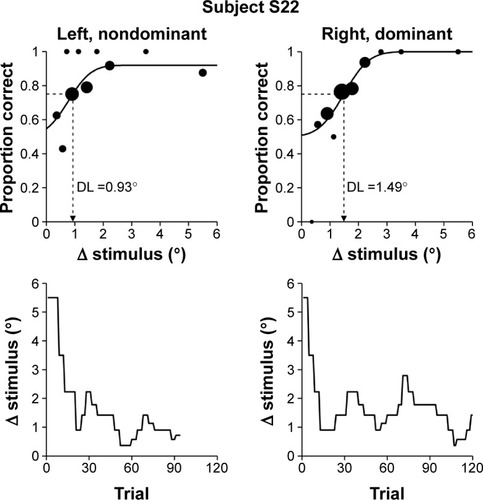Figures & data
Figure 1 Side view on the RCM mechanism of the robotic device used to induce passive movements around the MCP joint.
Abbreviations: MCP, metacarpophalangeal; RCM, remote center of motion.

Figure 2 Resulting psychometric functions and PEST sequences of a representative subject.
Abbreviations: DL, difference threshold or limen; PEST, Parameter Estimation by Sequential Testing.

Table 1 Summary of the mixed-effects model analysis with the estimates and their SE predicting the log10DL
Figure 3 Age–DL relationship.
Abbreviations: DL, difference threshold or limen; SE, standard error.

